What makes a good Buy to Let investment?
With property prices continuing to rise, Buy to Let can be an attractive way to invest. But whether buying your first Buy to Let property, or adding to your portfolio, it’s important to consider what’s involved.
Being a landlord
As well as the obvious duties of finding tenants and making sure they pay their rent on time, there are also a number of legal requirements that you need to meet as a landlord. For instance, you’ll need to use a deposit protection scheme, have the right Energy Performance Certificates and arrange annual safety checks and certificates for the utility supplies. You’ll also need to keep the property well maintained and respond to requests from your tenants if and when an issue arises.
Managing your finances
Then there’s the question of managing your commitment to the mortgage lender. Interest rates may be low now, but if you’re on a tracker mortgage and rates go up, could your income stand the rise? What if you have a gap in tenants and the rent dries up temporarily?
In the short term, landlords can still deduct mortgage interest from their rental income before calculating how much tax they should pay. However, from April, tax relief on Buy to Let mortgage interest will gradually be reduced. The restrictions will be phased in over four years, resulting in tax relief only being available at the basic rate of income tax (currently 20%) from April 2020. This could impact on any profit you’re expecting to make on your investment so it’s important to take it into account now.
Research before you buy
In terms of the property itself, have you thought about the location you’re buying in? Take the time to look around the area you’re considering. Is it up and coming or going down and out? If you’re looking to rent to a young family, do the local schools have a good reputation? Does it have good commuter links for young professionals? It may sound obvious, but it’s a good idea to put yourself in the shoes of your potential tenants and ask yourself what they would want. Their requirements may be quite different to yours.
Work out all the costs
Buy to Let lenders may require the rent you charge to cover up to 145% of the mortgage repayments, with many now requiring 25% deposits, or even larger. Once you know your mortgage rate and the monthly rent you’re going to charge, you should also factor in maintenance costs.
And with stamp duty 3% higher than on a residential property, make sure you cover all the costs involved in buying your investment property – especially in view of the diminishing tax relief.
Protect your investment
It’s important to protect your property, its contents, and your ability to keep up with your mortgage repayments should the unexpected happen and there are a range of different insurance products designed to meet these requirements:
- Buildings insurance
- Contents insurance
- Landlord’s insurance
- Life insurance
- Mortgage payment protection insurance (MPPI)
- Critical illness insurance
- Income protection
Which product is right for you will depend on your individual circumstances, so it’s important to get professional advice as part of the process.
If you’d like to find out more about Buy to Let investments, please get in touch.
Your home may be repossessed if you do not keep up repayments on your mortgage.

